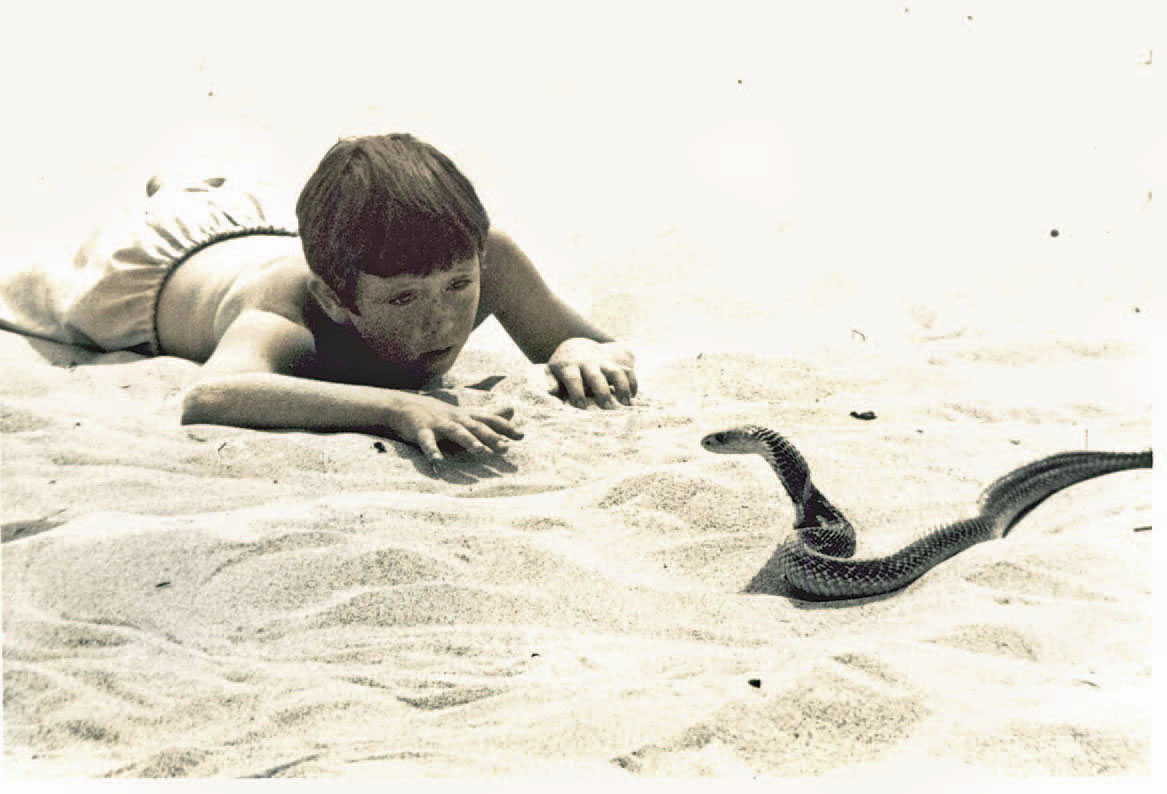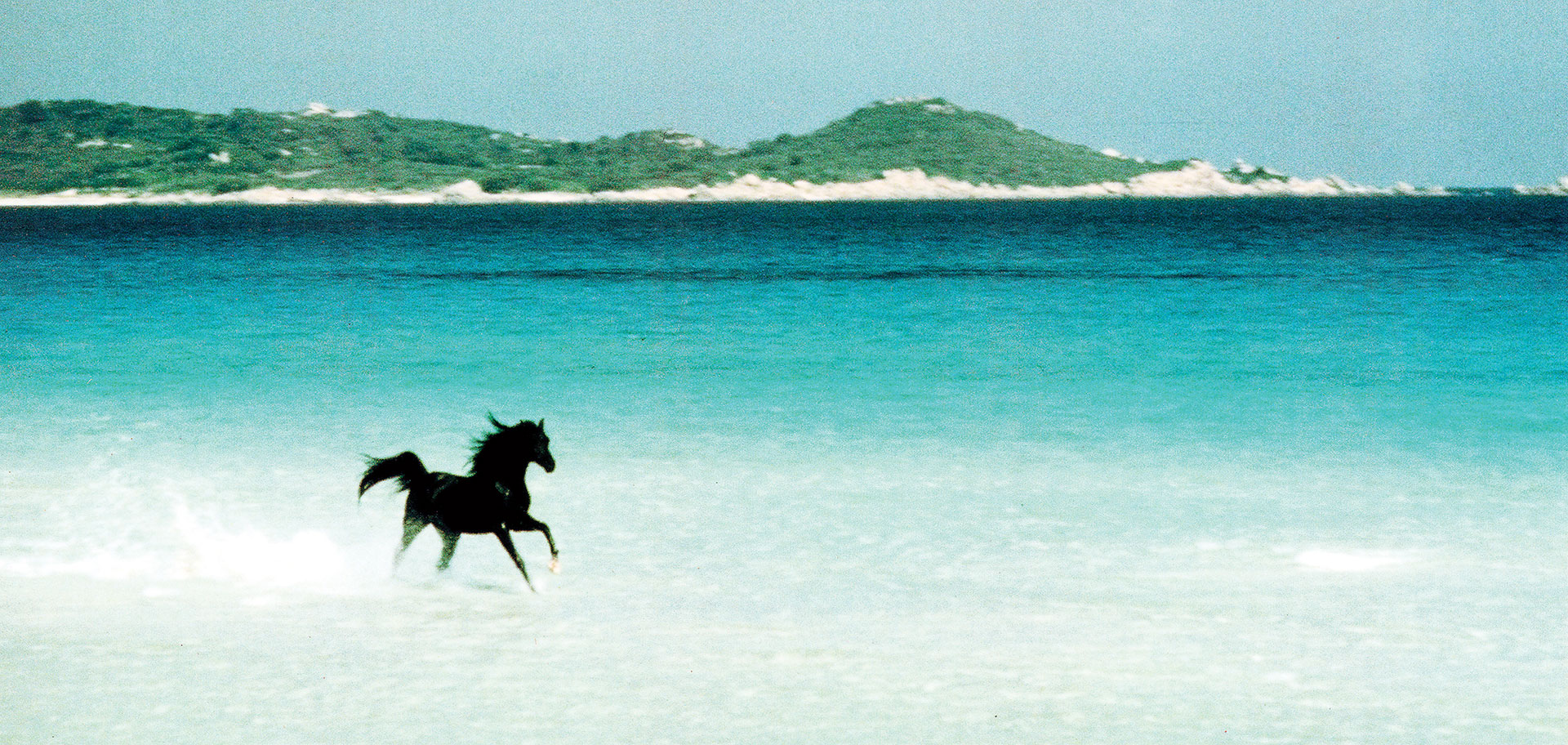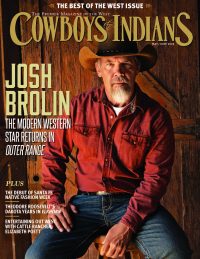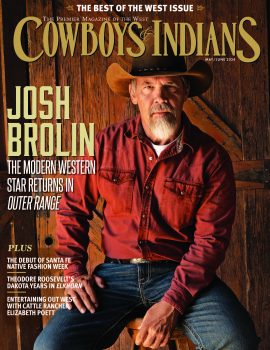Stunt coordinator Glenn Randall Jr. wore many hats during the making of the movie classic.
Shortly after Glenn Randall Jr. came onboard as stunt coordinator on The Black Stallion he was headed to a horse show in Texas. “They told me they’d committed to this black Arab. They wanted me to go see him. I said, ‘fine,’” recalls Randall, whose father, Glenn Randall Sr., trained Roy Rogers’ Trigger. “Myself, the producer, and I think the assistant director flew to Texas to see this horse.” A black Arabian stallion named Cass-Olé was being shown by Francesca Cuello when Randall met the girl’s father, Dr. Leo Cuello, at the competition.
“We were sitting in the upper bleachers in the arena. They had a little restaurant up there. It was a magnificent horse,” says Randall. “We had a talk and during the conversation he [Cuello] said the deal he’d made is we’d have to take their trainer to get possession of the horse. I said, ‘Really. I’d like to talk to the trainer.’”
When he did, Randall says, “I realized he was a show-ring trainer and had no knowledge, at all, of the type of training we were going to have to put on this horse. So I went back and said, ‘Gentlemen, we’ve got problems. If you want us to take your trainer along and let me hire another trainer and pay yours to watch while we train him, that’s fine with me.’”
Costs nixed that option.
“I said, ‘Well, then I can’t do the movie,” Randall continues. “The doctor spoke up and said, ‘I understand what you’re saying, Glenn, but the problem is the horse belongs to my daughter.”
Dr. Cuello’s daughter, then a teen, would only be assured that the horse would be safe if her trainer went along. But, Cuello allowed, “If she will let the horse go without the trainer, that’s fine with me.”
After winning her class, Francesca joined the group with her father and met Randall. “They introduced her and told her who I was. I said, ‘Would you walk with me for a little while? I want to go get a Coke.’ We went to another table away from her dad and the producers and all the other crew and I sat down and started talking to her.”

“I said, ‘I love your horse. He would be a wonderful black stallion you could be proud of. The problem is, we’re going to have to train your horse to do things he doesn’t know how to do. He’s going to have to work at liberty and learn a lot of different things. Your trainer is not qualified to do that type of training.’
“I explained to her who I was and what my background was. I said, ‘If you want the horse to go, you’re going to have to put your trust in me. I promise you that I’ll protect him with my life.’ We went back to the table and her dad said, ‘What do you think?’ She said, ‘I’m going to let the horse go because I trust Glenn.’ So, that’s how we got the horse.”
Randall proceeded to pave the path ahead. “I told the producers I’ve got to get a trainer and we’ll have to ship the horse to California and put him in training four to five months. Then I talked [brother] Corky into doing it,” says Randall.
Already established in Hollywood, his older brother wasn’t keen on the proposition. “Corky didn’t want to do the movie. I talked him into training the horse and it wasn’t easy. He wasn’t known as a horse trainer, as such. He’d been around my dad all of his life and we trained horses and what have you, but he was more of a ‘boss wrangler.’ He was probably one of Hollywood’s top ramrods, or boss wranglers. The Black Stallion launched his career as a horse trainer.”
Having gotten the horse and Corky on board, Randall was sent to the boy who would become the lead with the Black Stallion, Kelly Reno.
“Kelly came to California … got them a motel in Newhall with a swimming pool [near the Randall Ranch]. I spent half my time teaching him how to swim and we’d take him to the barn and let him work with Cass-Olé. His mother was not real sure about us. I promised his mother, ‘On my life, nothing is going to happen to him.’ So, now I’ve given my word on the horse and the little boy!”
He also brought two of his veteran trick horses to double Cass-Olé for difficult scenes. “They were sorrels, but we dyed them black. I had a lot of training on them. The horse that was tied up, wrapped up in ropes [after escaping the shipwreck and reaching the island], that was my horse dyed black.”
Randall’s horse also doubled where The Black gets loose and runs down a street back in America. “We shot that in Toronto — jumped over a car and that kind of stuff,” Randall recalls. “That’s what they hired me for. Doing all the stunt work and setting those things up. I would help them find locations, hire the people that would get the job done, and supervise the whole damn thing. I’m more structured in my work. I have to plan everything and look at every avenue of danger and provide for it.”
When the production got to Sardinia, Randall remembers that director Carroll [Ballard] and the director of photography, Caleb Deschanel, were adamant about having the horse swim 150 to 200 yards offshore.

“We swam our horses a little bit, but I said, “These horses aren’t amphibians. They can only swim a short distance.’ The producer said, ‘We’ve got to have them. What are we going to do?’ I said they’ve got some Camargue horses in France that were raised in the swamp and all they do is swim.’”
(Camargue horses are indigenous to the marshy Camargue wetlands of the Rhone delta in the south of France.)
Heeding Randall’s advice, they bought a white Camargue horse, significantly smaller than Cass-Olé, but it worked. “We dyed him black and used that little horse to do faraway swimming.”
Not only horses had water challenges. By this time, Kelly could swim, “But he wasn’t real brave about it,” Randall says. “One time they wanted to see Kelly far out, about 100 yards off the beach in Sardinia. Carroll just wanted him sitting on this rock outcropping. I gave Kelly a mask and said, ‘We’re going to have to swim out there. I’ll be on the back side of the rock, so they can’t see me but I’ll be right there with you.’
“He said, ‘OK,’ so we swam out to it. I said, ‘Let’s swim around the rock a little bit and get comfortable.’ We started swimming around and I looked down and it took my breath away. The water was so clear you could see 150 or 200 feet down. It was like jumping out of an airplane. It was a shock. When Kelly looked, he almost walked on water back to the rock! But, he did real good for a little kid.”
“I knew it was a good movie after I saw it,” he reflects on The Black Stallion. “I was kind of surprised, but the book had staying power. I did Raiders and ET and a lot of other movies that had legs too and are still being shown today.”
Randall’s credits — working as second unit director to stunt coordinator to stunts — saw him part of a long list of blockbusters, from Indiana Jones and Star Wars to The Mask of Zorro, and more.
“You’re also looking at a generation of films that will never be done again in the fashion that we did them. Back in the day, when my father did Ben Hur, they spent nine months just training the horses for it. In the stunt world, I had to do all my stunts for real. Now they’ve got cables, CGI, blue screen. It’s just a different way of making movies.”
These days, he’s retired and far from Hollywood. On the opposite coast from L.A.’s San Fernando Valley where he grew up, Randall lives on the 30-acre horse farm he built in Aiken, South Carolina, after leaving the movie business behind. “A little piece of heaven,” he says.
More about The Black Stallion
The Black Stallion: A Heartwarming Epic For The Ages
The Black Stallion’s Accidental Screenwriter
The Black Stallion’s Secret Weapon
The Black Stallion at 40 With Production Assistant Tim Farley
Photography: (All Images) Courtesy Tim Farley.












